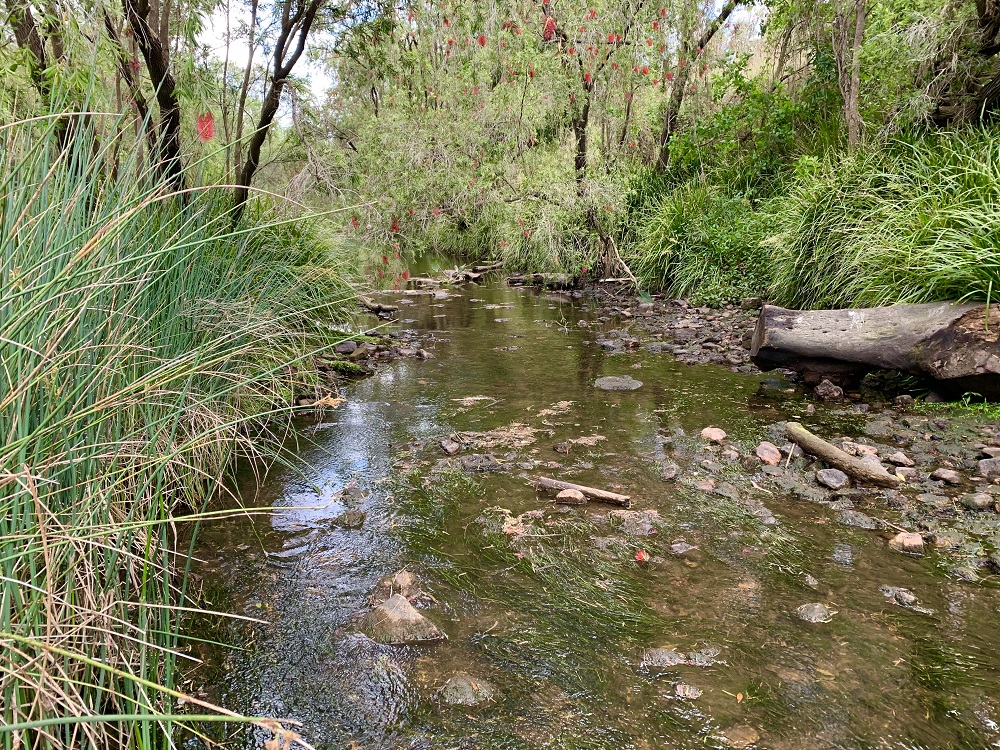Visit the Ipswich Disaster Dashboard: Disaster.ipswich.qld.gov.au
Follow Ipswich City Council on Facebook: Facebook.com/IpswichCityCouncil/
Water is our most valuable, natural resource. It has many diverse and important values - providing habitat sources for wildlife, water for households, factories and farms and recreational and educational benefits for us all. Because of this it is vital that we protect our waterways.
Council is working with a wide range of stakeholders in the community on initiatives to improve waterway health across the City.
A key mechanism is the Stormwater Quality Offsets Scheme.
Working with Franklin Vale landholders
Improving land management in this rural area has multiple benefits
Sustainable trees that reduce water use and filter pollutants
Council and the community investing in tree planting along riparian corridors
Restoring a concrete channel into a naturalised waterway has significant outcomes
Water quality management enables us to guard against the decline of our waterways and incorporates monitoring the quality of water, implementing programs which protect the waterways and rehabilitating habitat alongside waterways.
Through water quality monitoring we can collect regular data of water quality to assess the impacts of activities on the overall health of the catchment, or the area from which all run-off water flows to a low point to form a creek or river and is surrounded by hills and mountains. Areas of concern can then be investigated and action plans developed in order to minimise any problems.
Some common indicators of environmental health of the water include:
Monitoring also helps to evaluate how effective water management initiatives are in improving water quality.
Decreasing the amount of water pollution will directly help protect our waterways. Water pollution often comes from what goes down street side gutters which drain into local creeks and rivers so think carefully about what goes down the drain. The stormwater system is separate to the sewerage system so it all doesn’t flow to a treatment plant.
For further information see:
 Native vegetation along banks plays a very important role in:
Native vegetation along banks plays a very important role in:
The land that adjoins, or directly influences a body of water is also known as a riparian corridor and includes:
These vegetated corridors act as the 'skin' that provides protection to a waterway, acting as a buffer between terrestrial and aquatic ecosystems and maintaining the health and viability of the waterway, by:
Riparian corridors are also an important socio-economic asset, providing an integral link between suburbs, supporting people movement, offering recreational opportunities and improving the visual amenity of the surrounding area.